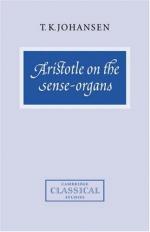|
This section contains 450 words (approx. 2 pages at 300 words per page) |

|
Embedded in the temporal bone inside the inner ear lays the vestibular system, which contains fluid-filled sacs and cavities that monitor the position and movement of the head and transmit that information to the brain. This system contains three semicircular canals, each oriented at right angles to the other two. The canals are connected to a saclike utricle, below which lies the sacule, another hollow structure.
The utricle and sacule contain receptors consisting of groups of hair-like cells, cilia, that are embedded in a gelatinous material. The gelatinous material contains many small particles of calcium carbonate called otoliths. These increase the sensitivity of the cilia. At the base of each receptor is a nerve fiber. The nerve fibers collectively carry information to the brain via cranial nerve VIII, the auditory vestibular nerve. The receptors of the saccule and utricle respond...
|
This section contains 450 words (approx. 2 pages at 300 words per page) |

|


